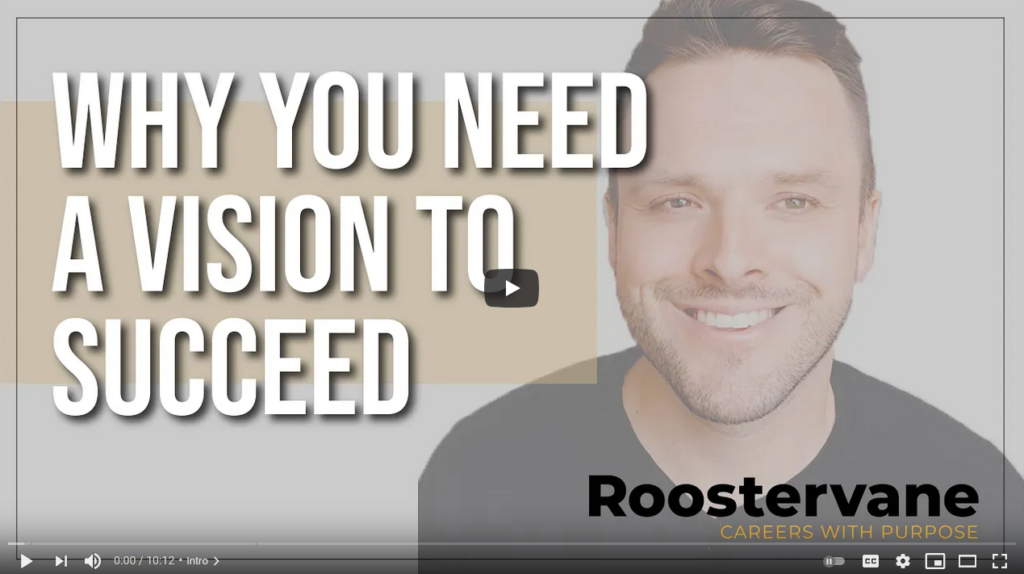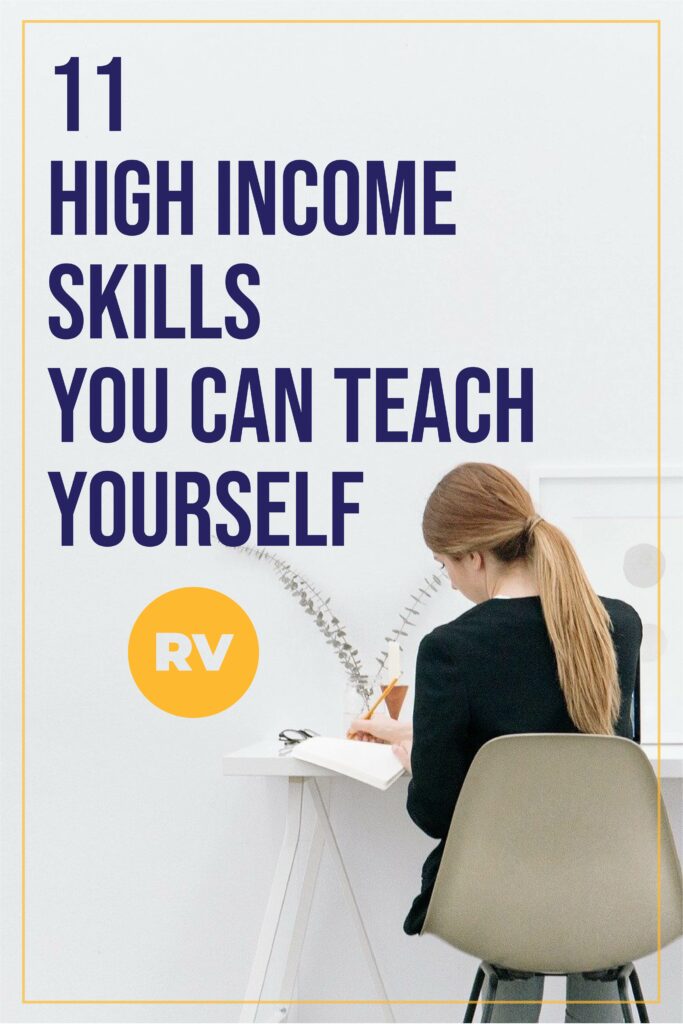Written by Joe Meringolo –
This post will show the importance of building skills and using a professional portfolio to boost your career. I’ll talk about why building your professional portfolio matters and some ways to start creating it. Doing this properly can help you springboard into your next role or even adjust your current role to better suit your strengths.
An important way to gain upward mobility and increase your chances at career growth come from connections and successfully performing on-the-job tasks. As you work and build those skills in your role, you might start to wonder about getting involved in other areas of the company or ways you could add value differently to the company.
How can you expand your skills outside of your role or use your existing role to build your abilities to launch into a new area?
Here’s where a well-executed professional portfolio can help.
What is a professional portfolio?
A portfolio of work can be geared toward showcasing any set of areas of expertise or skills. You’ve likely been involved in projects where you showcase certain abilities – writing, graphic design, marketing campaign development, curriculum design, research, reporting, etc.
Your portfolio showcases your ability to create, innovate and showcase how you work and your creativity. You’re not just telling your manager or a prospective employer your skills, you’re actively showing them what you can create and give them real context for your skills.
Keep in mind, you may need permission to release certain information that may contain proprietary information so consider your audience and use your discretion on incorporating certain information into your portfolio.
You’ll stay more active and engaged when you consider the impact of your work in the context of a portfolio.
Why create a professional portfolio?
A professional portfolio can showcase work you’ve done to a potential employer, and prove your ability to deliver on projects.
If you’re a soon-to-be graduate or professional, it can also give you a better sense of accomplishment and confidence.
When you see the fruits of your work, you notice exactly what tools you have in your toolbox. This gives you a chance to showcase existing abilities or to identify and strengthen certain skills that are missing.
Even if you aren’t making a career change now, a professional portfolio can increase your engagement and satisfaction on the job.
At some point, if you continue doing the same work and same routine, you may start to feel less engaged. According to Gallup’s Jim Harter, “Among actively disengaged workers in 2021, 74% are either actively looking for new employment or watching for openings. This compares with 55% of not engaged employees and 30% of engaged employees.”
If you can create your professional portfolio now, you’ll stay more connected with your work and potentially prepare you for your next professional move. That transition might not happen today or tomorrow, but it can help you intentionally work on projects that challenge you or resonate with your strengths.
When you find ways to have your professional portfolio connect with your big picture career goals and ambitions, you’ll also find yourself less vulnerable and more connected to your colleagues, your network and those around you.
Related Post: 4 Steps to Create a Career Vision that Pulls You Forward (Video)
How to pitch a portfolio-boosting project at work
If you’re looking to develop a project that goes on the fringe or outside of your role, you’ll want to put in some work ahead of time to outline your pitch to your manager.
Below are few questions to consider when you prepare to share your “pitch”:
- How will the project add value to you, your colleagues and/or stakeholders?
- Why does your target audience need it?
- What is the strategy, benefit and/or ROI?
Consider anticipating questions and potential roadblocks when going into the designing of a project that supports your portfolio and career goals. Think about what areas of the project where you have flexibility and the heart of what you want to do and why you want to do it. You don’t want the project to turn into some idea that goes completely outside of your original plan.
If your plan gains no traction and your pitch doesn’t work, well, at least you know. You can start finding other people, places or organizations that might appreciate your concept and it might connect you into a whole new professional ecosystem.
Looking ahead in your career, and around the corner of your current role, you’ll consider the type of skills that the hiring team wants to see on your resume and in your portfolio.
Build beyond the transactional needs of your professional portfolio and make sure you’re infusing your passion:
- Where and how does it show your passion for your work?
- What about your portfolio of work showcase why you love what you do?
When you connect your passion and mission to what you’re doing for your portfolio, you’ll feel a stronger connection to the purpose and value of your work.
You’ll want to find ways to leverage your KSAs, or Knowledge Skills and Abilities, in your portfolio that reinforce the narrative behind your career. That narrative might be one of the keys to pivot into a new role and unlock your next professional opportunity.
Other ways to grow your professional portfolio
You can contextualize your professional portfolio pieces in areas outside of your job that showcase your interests and hobbies outside of work so others can get a full look into who you are and your passions beyond the workplace, if you want to branch out a bit.
- Are you trying to build skills in marketing and/or graphic design work?
- Do you want to show your ability to sell and/or fundraise?
- What if you want to show event planning skills?
- Have you wanted to increase your video creating and editing abilities?
When you look closely at the goal of your collaboration or project, you’ll find ways to incorporate your own skills into it. The following can be great ways to boost your professional portfolio, even if you’re unemployed.
1. Volunteering
In your likely limited free time, you can seek out other fun ways that are both personally enriching and fulfilling to build these new skills or document existing skills. Volunteer positions with non-profits or start ups will potentially give you greater autonomy on the type of work you pick up and give you the ability to control the level of responsibility.
Some of these opportunities might be more event based or have certain times of year that require more commitment. Before you jump into volunteering, make sure you know what you’re willing to commit and how much the organization wants you to commit.
You’ll likely feel very fulfilled and appreciate the people and organization that you support, if you decide to go this route and use your skills to support them. If you don’t have the bandwidth to volunteer, you can always do more solo projects for your portfolio.
2. Personal Projects
With your own work, you manage your destiny and outcome. It won’t show much in terms of collaborative or team building skills, but you’ll be able to showcase skills and the project itself as your own creation.
What are your hobbies and interests? Is there a way that you can tie those into whatever skills that you’re trying to build for your future position or career?
For example, I love to travel and I wanted to work on some video production and editing skills for pleasure.
My answer? I created a short video of a recent trip that I had with my brother.
I also know that some prospective employers might like my video because it 1) shows I’m willing to put in work to create new content and 2) showcases my creativity and my way of thinking outside of the box.
Use your portfolio to “show” and not “tell” your skills. If you’re a good writer, find a way to express that in an article or other written form. Maybe see if you can contribute to a newsletter at your company or offer to contribute to a newsletter at another organization.
3. Collaborations
Do you know of another person or organization that would be open to you using your skills?
Message them and see if they are open to receiving your work or collaborating in an event or project that allows you to showcase your new skills or practice them.
Give your recipient a quick idea of what you’re willing to provide them and see if they’re willing to take on your pitch. It could be a social media post, a blog, an event that you run, or some other way that allows you and them to enjoy a mutual benefit.
How to build your professional portfolio
Do you have graphic design skills? Are you a great writer? Have you done academic research or coursework that shows valuable skills to an employer? Can you create engaging videos?
One concrete way to start creating your portfolio is to go into Google Drive and sketch out a Google Document, or you could do this in Microsoft Word. You can share the live Google Doc if you’re seeking feedback or you can share a .DOCX or PDF version of it with them in an email.
Here’s what to include in a professional portfolio:
[Your Name]
[LinkedIn Profile]
[Email Address, if you want]
[Date]
[Recipient]
[Overview – a brief description of what’s in your portfolio.]
Index
Written Content (page #)
Design Content (page #)
Written Content
Title 1
Subtitle 2 (quick description of 2-3 sentences)
[content or link]
Title 2
Subtitle 2 (quick description of 2-3 sentences)
[content or link]
Design Content
Title 1
Subtitle 2 (quick description of 2-3 sentences)
[content or link]
Title 2
Subtitle 2 (quick description of 2-3 sentences)
[content or link]
Please keep in mind, this type of portfolio framework works for my portfolio because I have written and graphic design work, but feel free to build your own that focuses on your own skills. The example (shown above) should provide some inspiration on how you might start creating or restructuring your own portfolio.
Don’t forget to order and select the most relevant pieces, designs, articles, videos, research etc that shed light on your areas of expertise and showcase your abilities. Less quantity of content and more focused quality gives your prospective employer, or whoever might be reviewing it, meaningful insights into how your skills connect with the desired position.
You’ll also want to consider adding in some language somewhere in your portfolio that states that the content is yours and the recipient needs your permission to take or redistribute any of the content in the portfolio.
Conclusion
Building your portfolio takes extra time, effort, intentionality and creativity. If you’re not in a position at your current company to gain or build new skills, try building a pitch for your manager before you bring your loose ideas to your manager or supervisor.
When you’re not sure that you’ll get the green light, you should consider looking out and around your network and extended network for opportunities for collaboration.
Want to connect or share your feedback? Add or message Joseph Meringolo on his LinkedIn!
Joe Meringolo
As a Washington DC metro area native, Joe received an undergraduate degree in English from St. Mary’s College of Maryland (USA) and later a Masters in Teaching and Learning Spanish from Universidad de Acalá – Instituto Franklin (Spain). His undergrad study abroad experiences in Italy and England collectively inspired him to pursue a global career as an educator and later transition into becoming an international education administrator. As an educator, he has taught a variety of subjects in classrooms around the world in Peru, Spain and the United States. For the last four years and counting, he’s collectively worked in a variety of areas within the field of international education. In this time, he has advised students in the admissions process for international internships, developed unique partnerships for global experiences, created and supported operations for international programs (virtual and in-person), and built marketing campaigns. His passion for writing about culture, languages and professional development come from his own life-changing experiences as an educator and his time as an international education administrator.
Now Read
These 2 Questions Will Give You a Magnetic Personal Brand
An Amazing Career Takes Social Capital. And Networking is the Best Way to Get It.
Read More:








